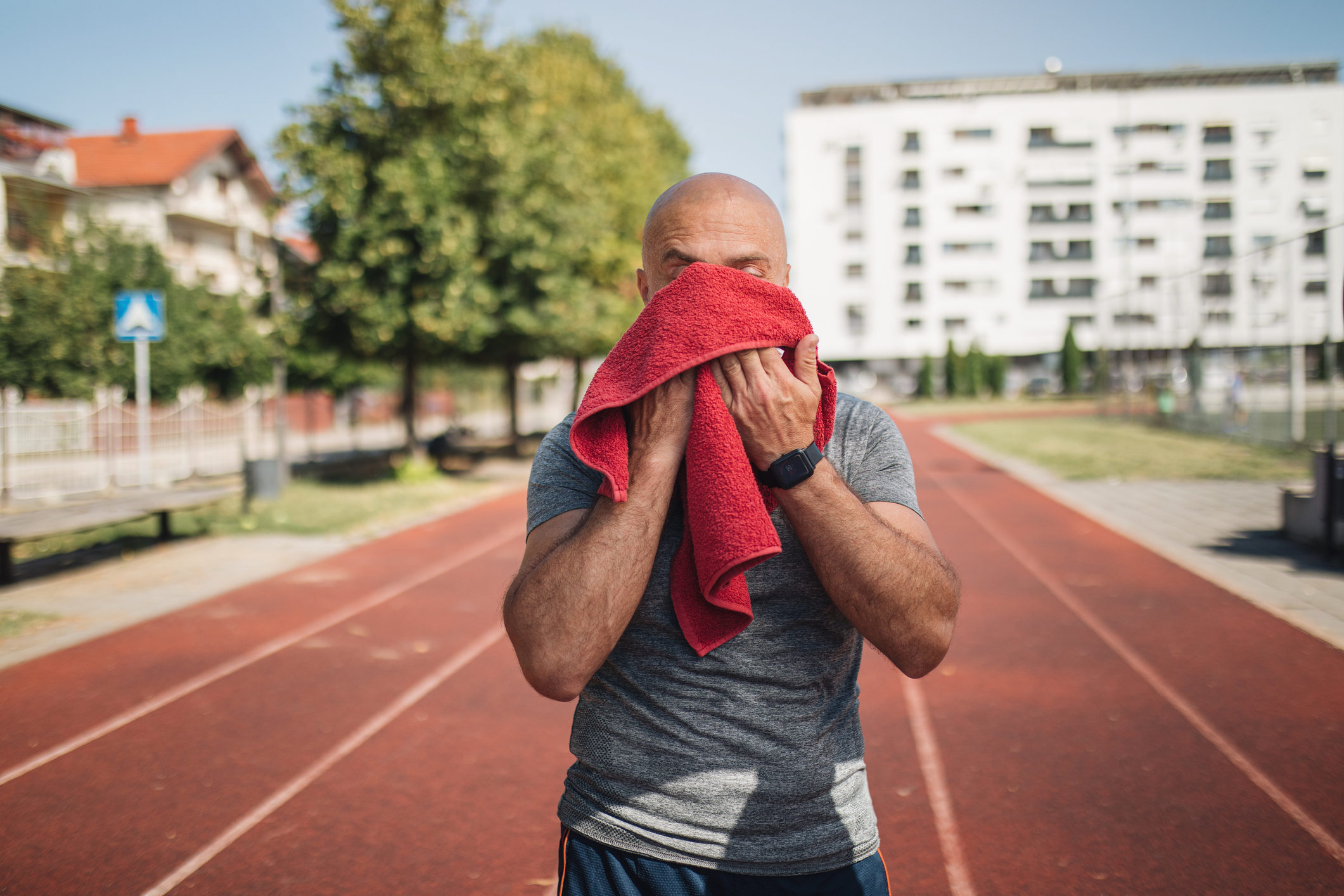Each week, OMRF Chief Medical Officer Dr. Judith James opens “Adam’s Journal” to answer a medical question from Adam Cohen, OMRF’s senior vice president & general counsel.
Adam’s Journal
With the arrival of summer and its soaring temperatures, I’ve been searching for some silver linings. Although doing just about anything in the heat is less pleasant than when done in cooler temperatures, I wondered whether exercise or other activities burned more calories in sweltering environments?
Dr. James Prescribes
Anyone who has ever taken a walk (or gardened, gone for a run, or attended a fitness boot-camp class) outside on a summer day in Oklahoma knows that activities feel harder when the mercury soars. Physiological measures such as heart rate and sweat rate confirm this, as both spike markedly when the temperature rises to the 80s, 90s and beyond.
While excessive sweating burns a few extra calories, the impact is marginal. All that perspiration can lead you to believe an activity has done more than it actually has because of the short-term loss of liquid weight. However, those pounds will return as soon as you rehydrate.
That brings me to a very important point. Exercising in extreme temperatures – especially for those not accustomed to such activity levels, those with pre-existing health conditions, and those doing it for long periods of time – can lead to dehydration and illnesses like heat exhaustion and heat stroke. These conditions can be dangerous, even life-threatening.
In the heat, your heart will have to work harder to sustain a given level of activity. So, that activity – say it’s walking at a pace of 15 minutes per mile – will, indeed, consume more calories than it would in more moderate temperatures.
Nevertheless, you will be unlikely to sustain the activity as long as you would in a cooler environment. You burn more energy while working out, but the workout ends more quickly. As a result, the net impact may well be negative: You’ll likely burn fewer total calories.
In addition, research has found that at higher temperatures, your body will burn a lower proportion of fat, and a higher proportion of carbohydrates, than at lower temperatures. So, if fat-burning is what you’re after, cooler temperatures are actually preferential.
I appreciate your search for an upside to the warming temperatures. But when it comes to summertime activities, the heat is not our friend. Continuing to stay active is vital during these next few months, but so is being smart about it.
Exercise in air-conditioned spaces whenever possible. For those who choose to go outside, avoid the hottest times of day, and keep your activity levels moderate. Stay hydrated.
If you feel dizzy or nauseous, stop immediately and head to a cool spot out of the sun. If the issue doesn’t resolve quickly, seek assistance.
–
James is executive vice president and chief medical officer of the Oklahoma Medical Research Foundation. Cohen, a marathoner, is OMRF’s senior vice president and general counsel. Send your health questions to contact@omrf.org.



